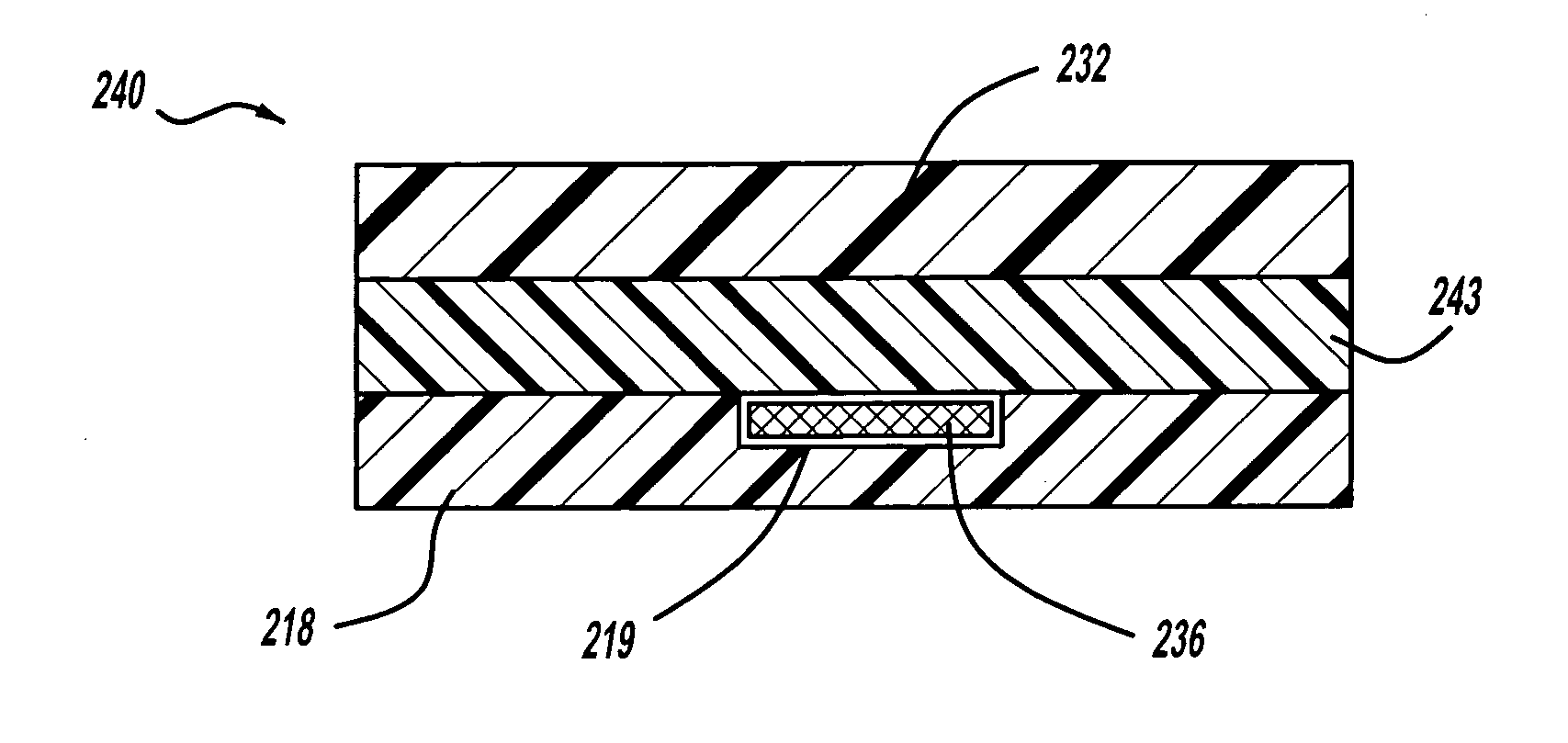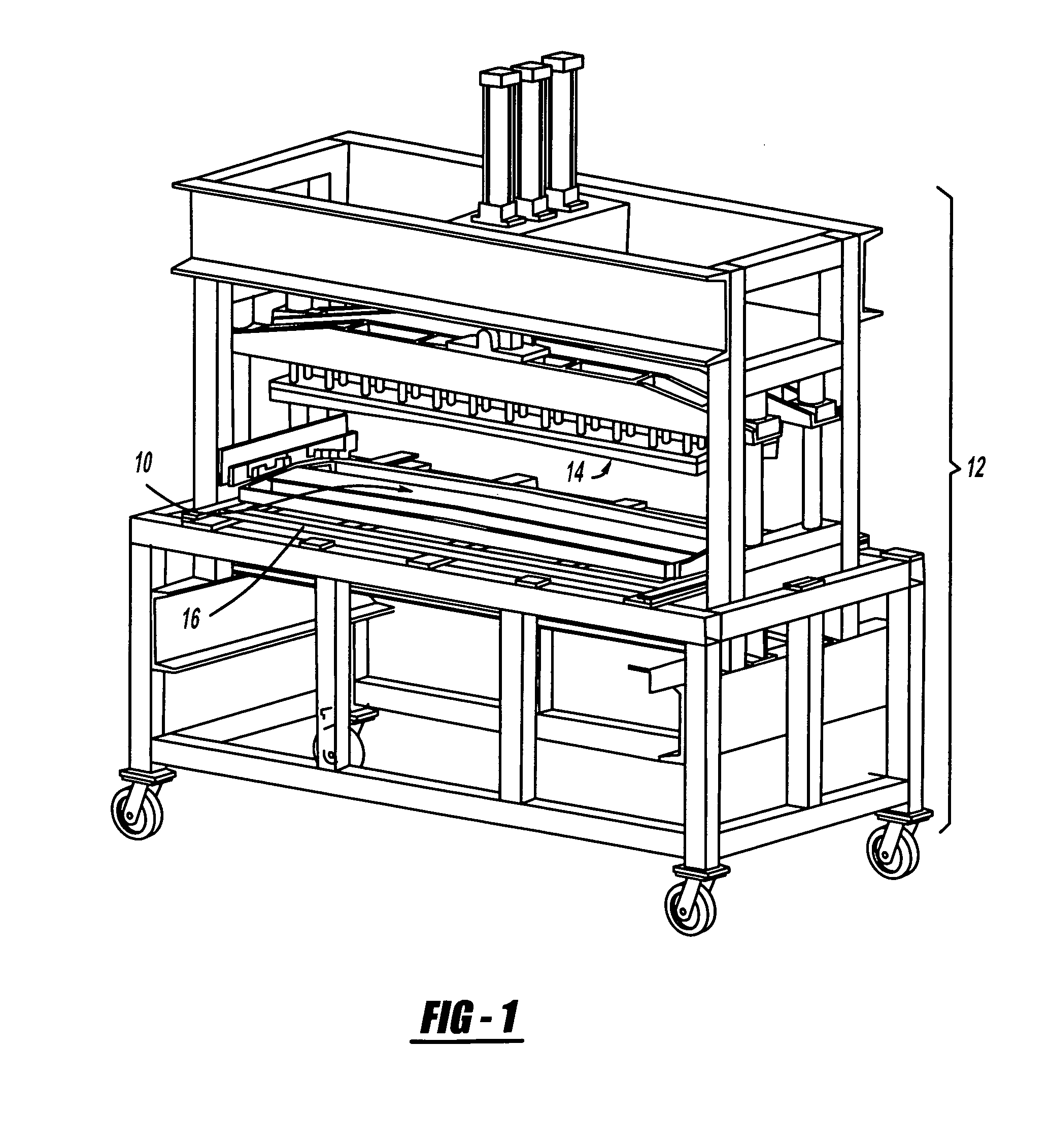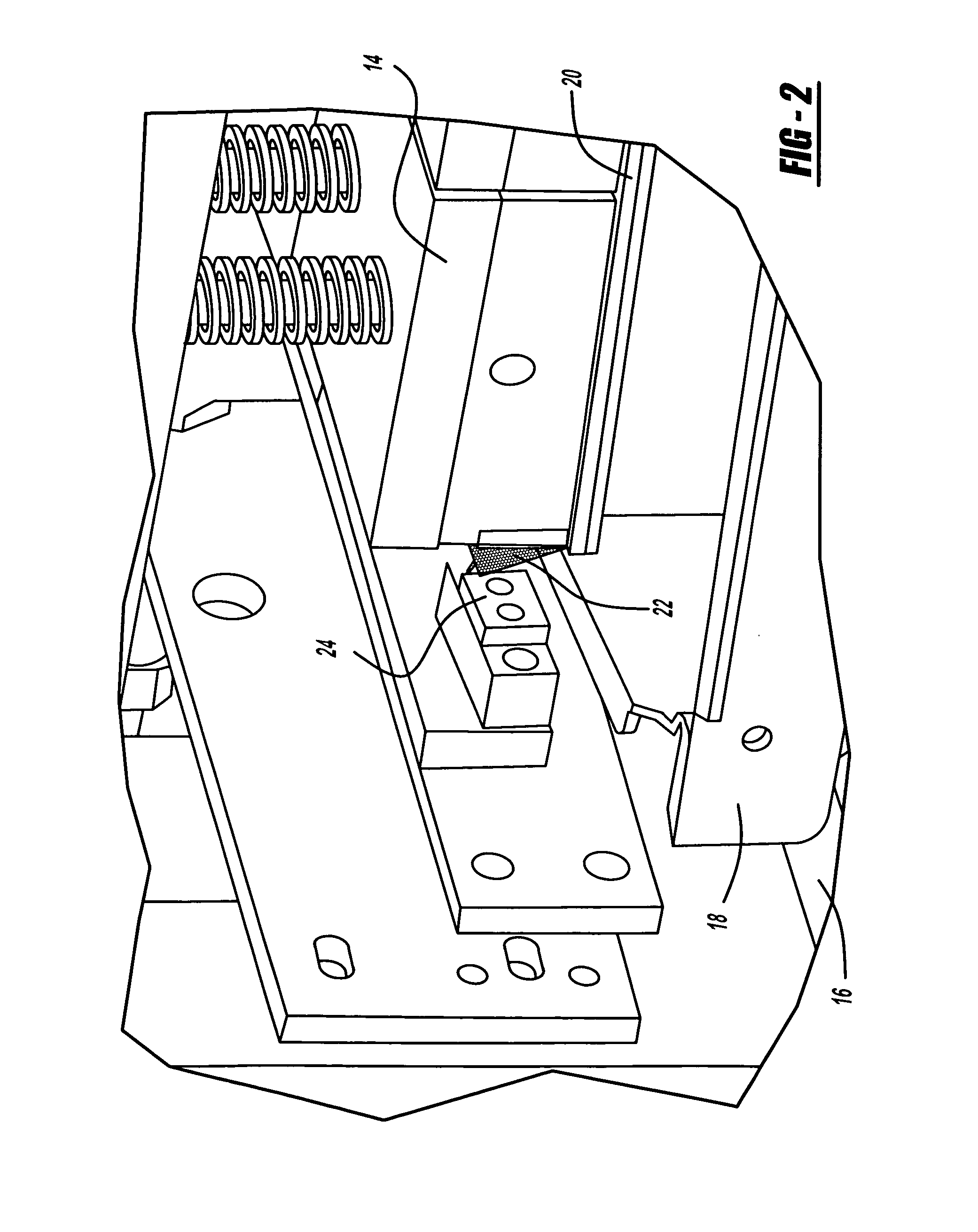Resistive implant welding for adhesive curing for thermoplastic and thermoset applications
a technology of resistive implants and adhesive curing, which is applied in the direction of superstructure connections, domestic articles, lamination, etc., can solve the problems and achieve the effect of reducing process time and saving a substantial amount of energy
- Summary
- Abstract
- Description
- Claims
- Application Information
AI Technical Summary
Benefits of technology
Problems solved by technology
Method used
Image
Examples
Embodiment Construction
[0017]The following description of the preferred embodiment(s) is merely exemplary in nature and is in no way intended to limit the invention, its application, or uses.
[0018]Referring now to FIGS. 1-2, 4 and 5 a method for forming a welded component using a hybrid resistive implant welding adhesive system. A structural component 10 is shown in the welding machine 12. The welding machine 12 has an upper platen 14 capable of moving vertically with respect to the structural component 10. The welding machine 12 also has a lower platen 16 upon which the structural component 10 rests. When the structural component 10 is to be welded the upper platen 14 will move vertically and press down against the structural component 10 and apply pressure. While the present exemplary embodiment of the invention describes the use of an upper platen 14 and lower platen 16, it is possible to reduce the number of fixtures required for forming the structural component 10 by eliminating the upper platen 14 a...
PUM
| Property | Measurement | Unit |
|---|---|---|
| surface area | aaaaa | aaaaa |
| energy | aaaaa | aaaaa |
| pressure | aaaaa | aaaaa |
Abstract
Description
Claims
Application Information
 Login to View More
Login to View More - R&D
- Intellectual Property
- Life Sciences
- Materials
- Tech Scout
- Unparalleled Data Quality
- Higher Quality Content
- 60% Fewer Hallucinations
Browse by: Latest US Patents, China's latest patents, Technical Efficacy Thesaurus, Application Domain, Technology Topic, Popular Technical Reports.
© 2025 PatSnap. All rights reserved.Legal|Privacy policy|Modern Slavery Act Transparency Statement|Sitemap|About US| Contact US: help@patsnap.com



